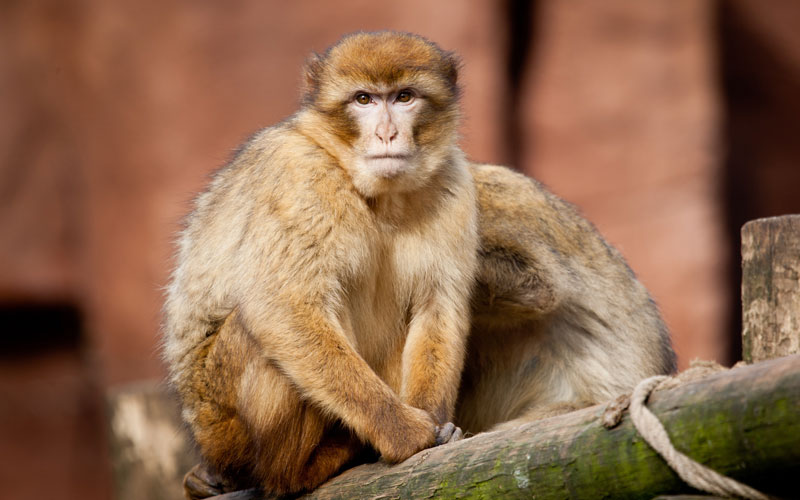Table of Contents Show
National Monkey Day is a delightful celebration on December 14th each year. It’s a day to recognize and appreciate our primate cousins, who share a close genetic relationship with us. In this blog post, we’ll explore the rich world of monkeys, from their diverse species to their intriguing behavior, cultural significance, and the critical need for their conservation.
Monkeying Around: Different Species of Monkeys
New World Monkeys
New World monkeys are a fascinating group known for their unique characteristics. Some examples include:
Spider monkey: Known for their long, slender limbs and prehensile tail, spider monkeys are excellent climbers and spend most of their time in trees.
Howler monkey: Famous for their loud vocalizations that can be heard from miles away, howler monkeys are primarily leaf eaters.
Tamarin: These small, squirrel-sized monkeys are highly social and communicate through a series of whistles and chirps.
These monkeys have a distinctive charm that’s hard to resist. For instance, tamarins are known to form tight-knit family groups, showcasing their strong social bonds.
Old World Monkeys
Old World monkeys are primarily found in Africa and Asia. Some well-known species are:
Rhesus macaque: These monkeys are highly adaptable and can be found in a wide range of habitats, from forests to urban areas.
Mandrill: The colorful faces of male mandrills make them one of the most striking monkeys in the world.
– Baboon: Baboons live in complex social groups and have a hierarchical structure.
One interesting contrast between New World and Old World monkeys is their geographic distribution. While New World monkeys are found in the Americas, Old World monkeys are predominantly located in Africa and Asia.
Lesser-Known Monkey Species
Beyond the commonly recognized monkeys, there are many lesser-known and endangered species. These include the golden lion tamarin, the snub-nosed monkey, and the silky sifaka. These monkeys may not have the fame of their more prominent relatives, but they play a crucial role in the ecosystem.
Don’t miss: National Puppy Day
Monkey Business: Understanding Monkey Behavior
Social Structure
Monkeys, like humans, are social creatures. They live in communities with complex hierarchies. In these groups, there are dominant individuals and subordinates, which helps maintain order and cooperation. Some species, like baboons, have intricate social structures that involve grooming rituals and alliances.
Comparing this to human social structures, it’s fascinating to see parallels. While monkeys may not hold meetings or use smartphones, they do have their own ways of maintaining social harmony.
Communication
Monkeys have various forms of communication. They use vocalizations, body language, and gestures to convey information. For instance, vervet monkeys have different alarm calls for different predators, showing a sophisticated understanding of their environment. Capuchin monkeys use tools to extract food, demonstrating problem-solving abilities.
Their communication skills are not just intriguing but also serve as a reminder of the rich tapestry of life on Earth.
Diet and Foraging
Monkeys have diverse diets, ranging from fruit and leaves to insects and small animals. The type of diet often influences their social behavior. For example, monkeys that rely on fruits can be nomadic, while those that primarily eat leaves tend to form stable groups.
This dietary variation showcases the adaptability of monkeys and how their behaviors are shaped by the availability of food.
Reproduction and Family Life
Monkeys have a range of mating rituals, from elaborate displays to vocalizations. The role of males and females in raising offspring varies among species. In some, fathers play an active role, while in others, mothers are the primary caregivers.
These differences highlight the diversity in monkey behavior and challenge the stereotype of a one-size-fits-all approach to parenting.
Monkeys and Culture: Their Role in Mythology and History
Monkeys in Mythology
Monkeys have played significant roles in various mythologies around the world. For example:
- In Hindu mythology, Hanuman, the monkey god, is a symbol of devotion and strength.
- In Chinese mythology, the Monkey King, Sun Wukong, is a beloved character known for his mischief and cleverness.
These mythological tales reflect the reverence and fascination humans have held for monkeys throughout history.
Historical Interaction with Humans
Monkeys have interacted with humans in various ways over the centuries. They’ve been domesticated as pets and served as subjects in art and literature. Phrases like “monkeying around” and “monkey see, monkey do” have become part of our everyday language.
Their influence is a testament to their enduring presence in human culture.
Conservation of Monkey Habitats
Deforestation and Habitat Loss
One of the biggest threats to monkeys is habitat loss due to deforestation. As human populations grow, forests are cleared for agriculture and development. This leads to fragmentation and destruction of monkey habitats, pushing many species closer to extinction.
Conservation organizations like the World Wildlife Fund (WWF) are actively working to combat deforestation and protect the habitats monkeys depend on.
Poaching and the Illegal Pet Trade
Poachers often target monkeys for their meat, fur, and as exotic pets. The illegal pet trade is a lucrative but detrimental business that has devastating effects on monkey populations.
Anti-poaching initiatives, supported by organizations like the International Primate Protection League (IPPL), are crucial in curbing this illegal trade.
Climate Change and Monkeys
Climate change is another looming threat to monkey habitats. It leads to shifts in temperature and rainfall patterns, affecting the availability of food and water. Monkeys, especially those with specific dietary preferences, face challenges in adapting to these changes.
Mitigation strategies, such as reforestation and habitat restoration, are essential to help monkeys cope with the effects of climate change.
Celebrating National Monkey Day: Ideas and Activities
Monkey-Themed Events
You can celebrate National Monkey Day by participating in local or virtual monkey-themed events. These events often feature educational talks by experts, monkey-themed games, and even opportunities to support monkey conservation causes.
Monkey Crafts and DIY Projects
Get creative with monkey-themed arts and crafts. Whether you’re making monkey masks, paper plate monkeys, or monkey-themed jewelry, there are plenty of DIY projects for all ages to enjoy.
Monkey Conservation Awareness
Consider fundraising for monkey conservation organizations. Every little bit helps protect these amazing creatures. Volunteering opportunities may also be available if you want to get more involved in direct conservation efforts. Don’t forget to spread awareness on social media by sharing monkey facts and stories.
Monkey Costume and Dress-Up
Get into the spirit of National Monkey Day by dressing up as your favorite monkey species. Whether it’s a classic chimp or an exotic mandrill, costume contests and monkey-themed parties are a fun way to celebrate.
Conclusion
National Monkey Day is more than just a quirky holiday; it’s a reminder of the incredible biodiversity on our planet. Monkeys deserve our admiration and protection with their diverse species, complex behaviors, and rich cultural significance. As we celebrate these primate cousins, let’s also commit to preserving their habitats and ensuring a brighter future for all living beings that share our world.

